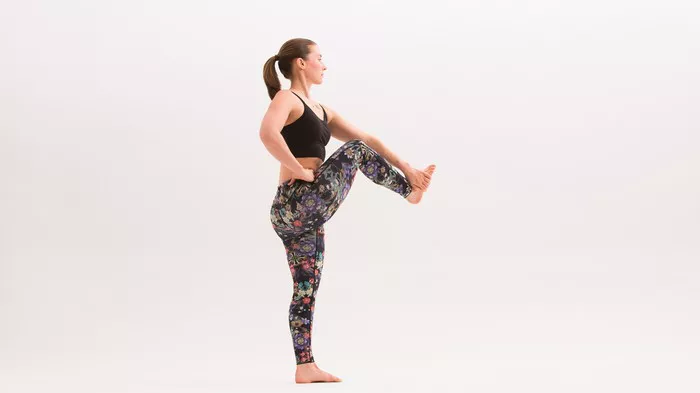Goat yoga has surged in popularity in recent years, captivating fitness enthusiasts and animal lovers alike with its unique blend of yoga practice and adorable goat companionship. As an instructor, guiding a goat yoga session requires not only a deep understanding of yoga principles but also an appreciation for the playful and unpredictable nature of goats. In this comprehensive guide, we will explore the essential steps and considerations for effectively teaching goat yoga classes.
Understanding the Essence of Goat Yoga
Before delving into the specifics of teaching goat yoga, it’s essential to grasp the underlying philosophy and objectives of this distinctive practice. At its core, goat yoga aims to combine the physical and mental benefits of yoga with the therapeutic effects of interacting with animals, particularly goats. The presence of these curious and affectionate creatures adds an element of joy, spontaneity, and connection to the yoga experience, fostering a sense of relaxation and mindfulness.
Preparing Yourself and Your Goats
Successful goat yoga sessions begin with thorough preparation. As an instructor, it’s crucial to cultivate a calm and welcoming atmosphere for both participants and goats. Start by selecting goats that are well-socialized, friendly, and accustomed to human interaction. Introduce them to the yoga space gradually, allowing them to familiarize themselves with the environment and the people present.
Ensure that the yoga space is safe and free of any hazards that could potentially harm the goats or participants. Remove any sharp objects, toxic plants, or obstacles that may pose a risk during the session. Additionally, provide ample water and shade for the goats, especially if the class takes place outdoors.
Designing Goat-Friendly Yoga Sequences
When designing yoga sequences for goat yoga classes, it’s essential to strike a balance between traditional yoga poses and goat-friendly activities. Incorporate poses that are accessible to practitioners of all levels while also allowing ample space for goat interaction. Keep in mind that goats may climb, nibble, or nuzzle during the practice, so choose poses that accommodate these behaviors without compromising safety or alignment.
Begin the session with gentle warm-up poses to prepare the body and mind for the practice ahead. Encourage participants to focus on their breath and cultivate a sense of mindfulness amidst the presence of the goats. As the class progresses, gradually introduce a mix of standing, seated, and reclining poses, making adjustments as needed to accommodate goat antics.
Facilitating Goat Interaction
One of the highlights of goat yoga is the opportunity for participants to interact closely with the goats throughout the practice. As an instructor, your role is to facilitate these interactions while maintaining the flow and integrity of the yoga session. Encourage participants to approach the goats with gentleness and respect, allowing them to initiate contact at their own pace.
Incorporate moments of goat interaction into the yoga sequence, inviting participants to incorporate goats into their poses or offering opportunities for hands-on interaction between poses. Be mindful of each goat’s comfort level and boundaries, ensuring that interactions remain positive and non-invasive.
Managing Expectations and Challenges
While goat yoga can be a delightful and rewarding experience, it also comes with its share of challenges and unexpected moments. As an instructor, it’s essential to manage participants’ expectations and prepare them for the unpredictable nature of goat behavior. Remind participants that goats are naturally curious and playful animals, and their presence adds an element of spontaneity to the practice.
Address any concerns or fears that participants may have about interacting with the goats, and provide guidance on how to navigate these interactions safely. Encourage open communication and flexibility throughout the session, allowing participants to embrace the unique experience of goat yoga with curiosity and joy.
Ensuring the Well-Being of the Goats
Central to the practice of goat yoga is the well-being and welfare of the goats involved. As their caretaker during the session, it’s your responsibility to ensure that the goats are treated with care, respect, and compassion. Monitor their behavior closely throughout the class, and be attuned to any signs of stress or discomfort.
Provide opportunities for the goats to take breaks and rest as needed, especially if the session is particularly long or demanding. Offer plenty of positive reinforcement and rewards to reinforce desirable behaviors, such as calmness and gentle interaction with participants.
Conclusion
Teaching goat yoga is a unique and rewarding experience that combines the ancient practice of yoga with the playful presence of goats. By understanding the essence of goat yoga, preparing yourself and your goats adequately, designing goat-friendly yoga sequences, facilitating goat interaction, managing expectations and challenges, and ensuring the well-being of the goats, you can create a memorable and enriching experience for participants of all ages and abilities. Embrace the joy, spontaneity, and connection that goat yoga offers, and let your classes be a celebration of mindful movement and playful companionship.
FAQs:
Is goat yoga expensive?
Goat yoga prices can vary depending on location, instructor expertise, and additional amenities offered. Generally, goat yoga classes are priced similarly to regular yoga sessions, ranging from $20 to $40 per class on average. Some venues may offer package deals or discounts for multiple sessions, making it more affordable for participants to enjoy the experience.
Is goat yoga relaxing?
Many participants find goat yoga to be deeply relaxing and therapeutic. The presence of goats can help alleviate stress and promote a sense of calmness and connection. Interacting with the goats during yoga poses can foster a playful and light-hearted atmosphere, making the practice enjoyable and rejuvenating for both the body and mind.
Is goat yoga safe for goats?
When conducted responsibly and with proper care, goat yoga can be safe for goats. It’s essential to select goats that are well-socialized, healthy, and accustomed to human interaction. Providing a safe and hazard-free environment, monitoring goat behavior closely, and allowing them opportunities for rest and relaxation are crucial for their well-being during goat yoga sessions. Additionally, ensuring that interactions between goats and participants are gentle and respectful helps minimize stress and potential risks for the goats.























